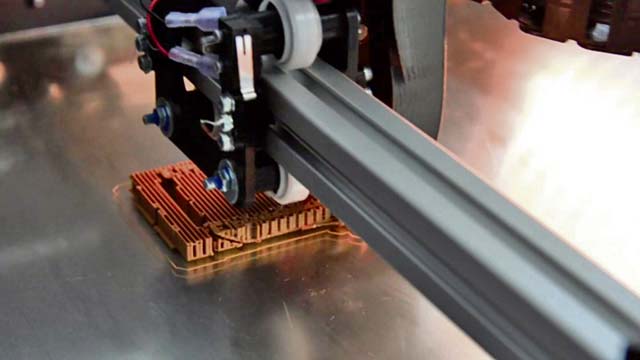
by Airmen 1st Class
Daniel Sanchez & Crystal Young
86th Airlift Wing Public Affairs
In a room at the 313th Expeditionary Operations Support Squadron building on Ramstein Air Base, the newest tool for operational planning quietly laid the foundations in a three-to-one scale, three-dimensional model of geographic areas along flight routes.
As part of an innovation program, the squadron requested funds to purchase a 3-D printer to provide another way to inform pilots of challenges they may face along routes they fly.
“Having a topographical map really helps to put yourself in that situation,” said Tech. Sgt. Richard Atkins, 313th EOSS intelligence flight chief. “Our commander was looking for new ways to reinvigorate what we do as intel for not only the flyers, but the rest of the squadron.”
Many sectors use 3-D printing to bridge knowledge, supply and technology gaps with meticulously placed strands of plastic that build real-world computer-aided design models for everything from prosthetic blood vessels to battlefield models. Atkins said the 313th is using the technology to explore ways to improve intelligence operations.
“Now there is a physical object to look at,” Atkins said. “This is a great back-up just in case we lose all of [the other technologies] we have a physical map [operations teams] can look at and use for planning.”
Atkins said his squadron is developing procedures they hope will be adopted by other Air Force organizations to enhance intelligence operations.


